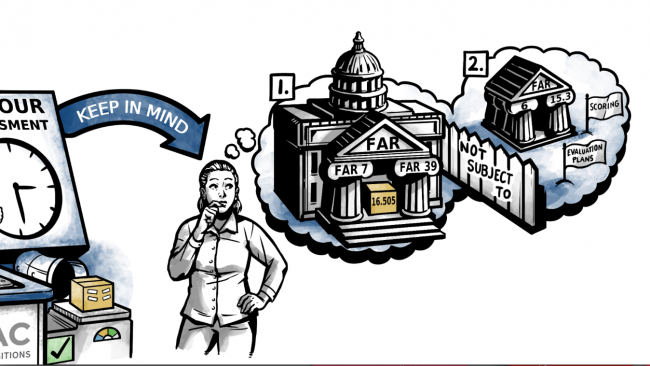
Understanding Fair Opportunity
What is fair opportunity and how did it come about? How did it transform the federal IT acquisition space? We break it down.
Prior to the passing of the Clinger-Cohen Act (CCA) in 1996, it typically took the federal government years to purchase IT products and services--resulting in receiving potentially obsolete technology by the end of buying cycles. After the passing of the CCA, federal agencies were now allowed to acquire technology through the use of Government-Wide Acquisition Contracts (GWACs). This sped up and streamlined the way federal agencies purchased IT products and services. This process was codified in the Federal Acquisition Regulations (FAR) as Fair Opportunity, and offers more flexibility and benefits to federal agencies when purchasing IT.
Fair opportunity is a requirement that federal agencies purchasing IT products and services must follow when using a multiple award contract, including GWACs. It states that if a purchase exceeds the micropurchase threshold, the agency must give every company that holds that contract an equal opportunity to respond to a request for proposal (RFP). Fair opportunity is intended to level the playing field so that agencies cannot give an unfair advantage to one contractor over another. The concept of fair opportunity is mandated by Federal Acquisition Regulation (FAR) 16.505(b).
The three NITAAC GWACs, CIO-SP3, CIO-SP3 Small Business and CIO-CS, are multiple award IDIQ contracts for IT that can be used by any government agency. They are different from GSA Schedules because they are governed by FAR 16.505(b) instead of FAR Part 8.
Rather than leave it up to the agencies to determine how to ensure fair opportunity, NITAAC has designed an electronic Government Ordering System (e-GOS) to ensure that fair opportunity is carried out correctly on every order. This web-based, secure system is fast and easy to use—allowing contracting professionals to walk through the entire solicitation process seamlessly.

 U.S. Department of Health & Human Services
U.S. Department of Health & Human Services



